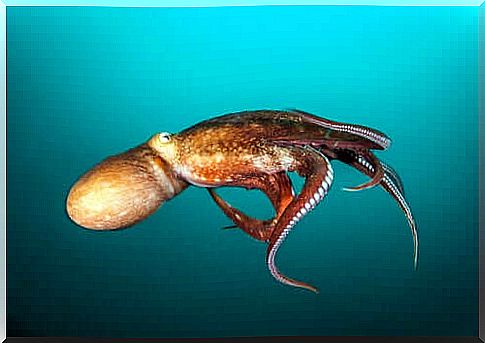Giant Squid Sightings Around The World

Giant squid is a mollusc-type invertebrate that belongs to the cephalopod class. Danish biologist Japetus Steenstrup discovered these beings in 1857 and named them Architeuthis dux , which means “prince of the squid”. More than 160 years later, information about them remains sparse.
What little is known about these giant molluscs comes from dead specimens that land on shore. However, these corpses, for the most part, are already decomposed. Furthermore, they were either captured by fishermen or they are just fragments located in the sperm whales’ stomachs.
From genetic studies, the existence of 12 species of giant squid and it was possible was discarded to ensure there is only one: the Architeuthis dux. This was the conclusion of research carried out at the Marine Research Institute of Vigo.
Giant Squid Characteristics
Its total length reaches 14 meters and its weight varies between 230 and 250 kilos. It lives mainly in the depths of the sea, between 250 and 1,500 meters below the surface. That is, in places where the pressure is very high and sunlight does not reach.
The squid has a very large head, while its body is spherical with two lateral fins. In addition, around its mouth are a total of 10 tentacles: eight with suckers and two contractiles.
The contractile tentacles, longer than the others, are prehensile. Therefore, they are used to capture prey and bring them to the shorter tentacles. Once the prey is surrounded, the giant squid uses its powerful jaw in the shape of a curved beak to tear it apart.
These are solitary animals that feed on fish, cephalopods and even crustaceans. Its only predators are the sperm whale and its congeners.

The giant squid’s eyes measure between 25 and 30 centimeters in diameter, being considered the largest in the animal kingdom. They have a very sensitive retina that serves to detect their biggest predator, the sperm whale.
The sperm whale produces a bioluminescence around itself because of the plankton attached to it. Thus, the squid detects the luminescence and can escape the surprise attacks of its predators.
In addition, the giant squid also defends itself by launching an ink jet, which inhibits the olfactory organs and makes it difficult for the predator to see.
Why do they surface?
The possible reasons why gigantic squid emerge to the surface can be several:
- Being seriously injured from a predator or other squid.
- They may have accidentally fallen into fishing nets.
- Oil and gas exploration processes from explosions disorient or hurt these giant molluscs. When they rise to the surface, they suffocate to death.
Giant Squid sightings
Generally, only giant squid corpses are seen. These can be moribund specimens floating on the surface or remains that have been found inside sperm whales or dolphins. Unfortunately, it is very difficult to spot a giant squid alive and on the surface.
Despite this, in December 2015, a live giant squid was found in Toyama Bay, Japan. This was the most important sighting in recent times, as it was in shallow water. The reasons for their appearance in these strange conditions are still unknown.
The specimen found was about four meters long. Although it was not as huge as other remains found around the world, it already had a standard size within the species.

In addition to Japan, giant squid is commonly found in Asturias, Spain, Newfoundland, Canada, Namibia, New Zealand and South Africa.
The abundance of these immense animals in Spain is due to the great depth (200 to 3,000 meters) existing in the underwater canyons of Llanes, Avilés or Llastres, which the squid take advantage of to protect themselves from their predators and feed.








